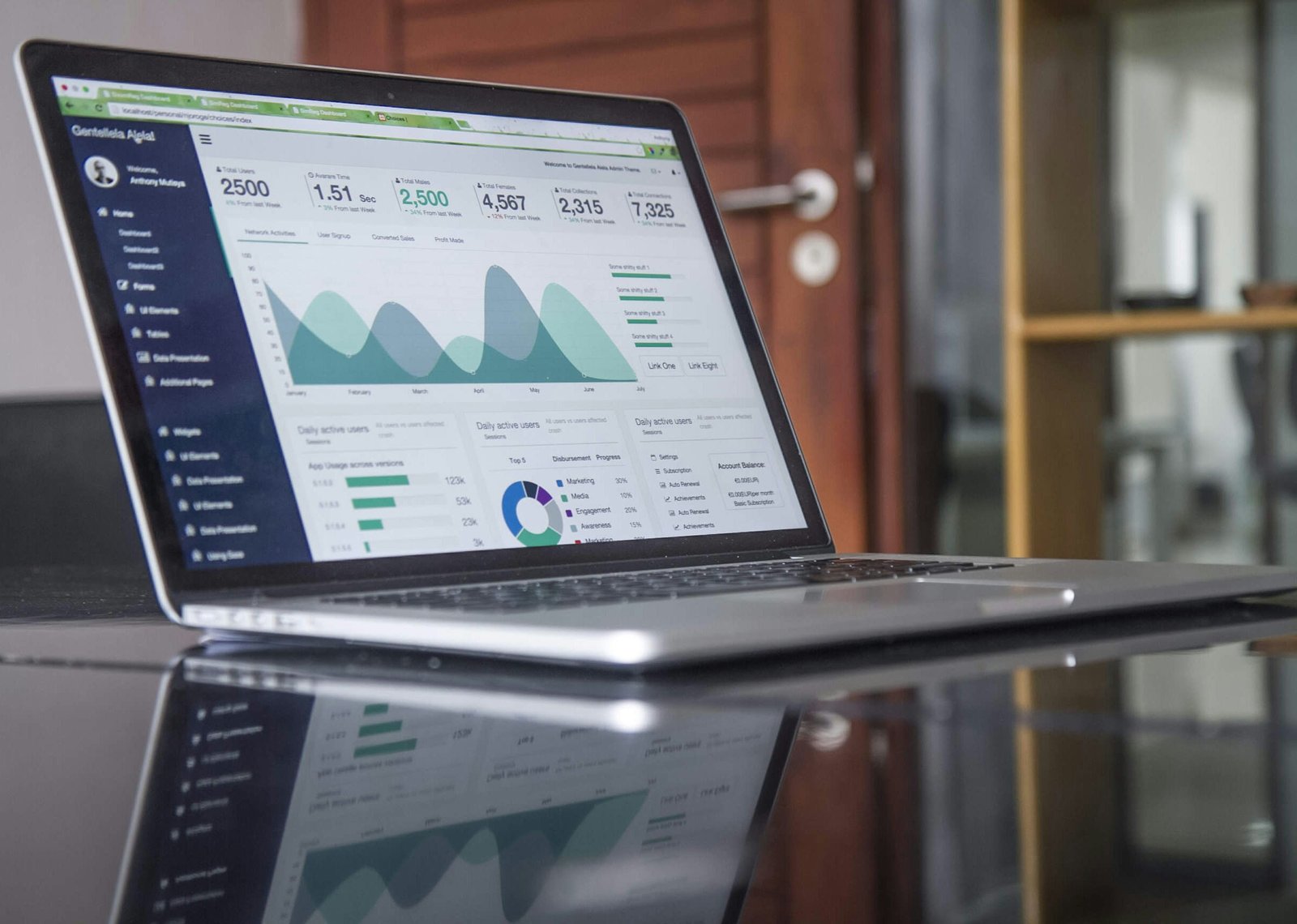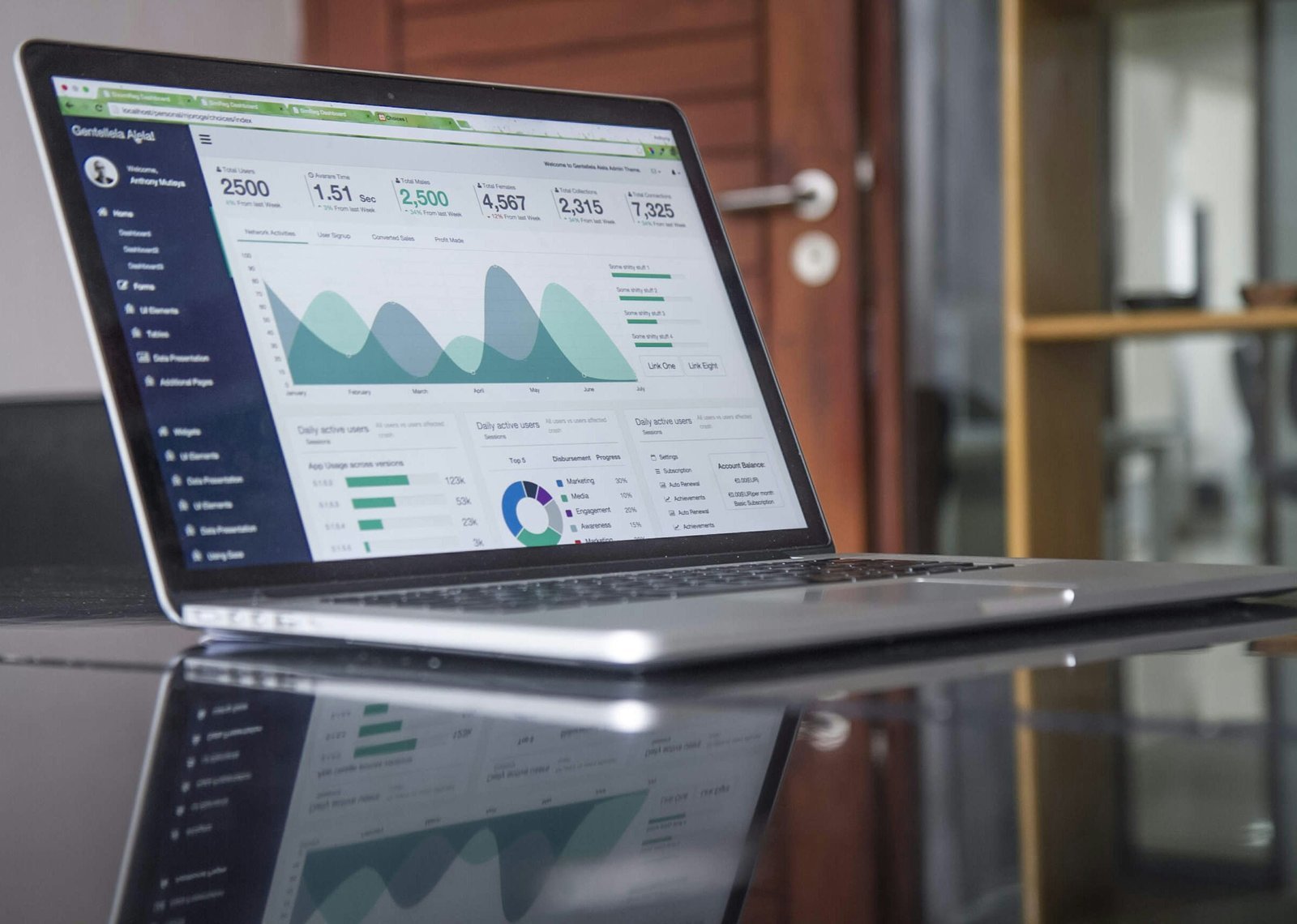
Harnessing the Power of Data-Driven Applications: A Comprehensive Guide

Introduction to Data-Driven Applications
Data-driven applications are revolutionizing the way organizations operate by integrating large amounts of data into their core functionalities. These applications are designed to acquire, process, and analyze data, transforming raw information into actionable insights. A data-driven approach enables businesses to make informed decisions, optimize operations, and proactively respond to changes in the market.
One of the defining characteristics of data-driven applications is their reliance on sophisticated data analytics. By leveraging advanced algorithms and machine learning techniques, these applications can identify patterns, predict trends, and automate complex processes. This capability not only boosts efficiency but also drives innovation by uncovering opportunities that might otherwise remain hidden.
The importance of data-driven applications extends across various industries. In healthcare, they provide critical insights for patient care and operational efficiency. Retailers use them to personalize customer experiences and manage inventories effectively. Financial institutions rely on data-driven models for risk assessment and fraud detection. Essentially, any sector that generates large volumes of data can benefit from harnessing its power through these applications.
Furthermore, data-driven applications enhance decision-making by offering clear, data-backed evidence. Stakeholders can base their strategies on concrete statistics rather than intuition, leading to more precise and successful outcomes. This shift from intuition to evidence-based decision-making fosters a culture of transparency and accountability within organizations.
As we delve deeper into the world of data-driven applications, it is crucial to understand the mechanisms behind their operation. The integration of data-driven approaches into software applications involves several key components, including data collection, storage, processing, and visualization. Each of these elements plays a vital role in ensuring that the data is accessible, reliable, and usable for generating meaningful insights.
This comprehensive guide aims to explore these aspects in detail, providing a thorough understanding of how data-driven applications can be effectively implemented and utilized to achieve various business objectives.
The Evolution of Data-Driven Applications
Data-driven applications have undergone a remarkable transformation over the decades, evolving from simple data processing methods into sophisticated tools leveraging advanced machine learning and artificial intelligence. The journey began in the mid-20th century with the advent of basic statistical techniques, primarily for academic research and simple data analysis tasks. During this era, manual calculations and rudimentary software paved the way for understanding and processing data significantly more efficiently than previously possible.
As computational power increased in the subsequent decades, the 1970s and 1980s witnessed the rise of database management systems (DBMS). These systems revolutionized the way data was stored, indexed, and retrieved, enabling businesses to handle large volumes of information with greater ease and accuracy. SQL (Structured Query Language) emerged as a powerful tool, facilitating complex queries and data manipulation. The capability to organize and access data more efficiently spurred the development of applications that started to harness this wealth of information for decision-making processes.
The 1990s marked another significant leap with the advent of the internet and the proliferation of personal computers. This era saw the integration of data-driven applications into mainstream business operations. Data warehousing and online analytical processing (OLAP) technologies allowed businesses to aggregate data from multiple sources, providing deeper insights and more strategic decision-making capabilities. The emergence of business intelligence (BI) tools further empowered organizations to analyze trends and patterns with unprecedented accuracy.
Entering the 21st century, the explosion of big data catalyzed a new era in data-driven applications. With vast amounts of data generated daily through social media, IoT devices, and other digital channels, traditional methods of data processing became insufficient. This period saw the rise of machine learning and artificial intelligence, which enabled applications to learn from data and make intelligent predictions. Algorithms capable of recognizing patterns and making autonomous decisions began to dominate the landscape, leading to significant advancements in fields such as healthcare, finance, and technology.
Today, data-driven applications are integral to nearly every aspect of modern life. From personalized recommendations on streaming platforms to predictive maintenance in industrial settings, these applications leverage vast, complex data sets to provide enhanced functionality and improved outcomes. As we continue to advance into the era of artificial intelligence, the evolution of data-driven applications promises to usher in even more revolutionary changes, harnessing the power of data to drive innovation and efficiency across diverse sectors.
Key Components of Data-Driven Applications
Data-driven applications are increasingly at the forefront of technological innovation, relying on robust and well-orchestrated components to deliver actionable insights and enhanced decision-making capabilities. The foundational aspects of these applications revolve around efficient data collection, secure data storage, and effective data processing methodologies.
Effective data collection methods play a pivotal role in the success of data-driven applications. Diverse techniques such as web scraping, surveys, and sensor data acquisition enable the systematic gathering of large datasets from various sources. Employing APIs to integrate data from third-party services further amplifies the scope and richness of the collected information.
Once collected, implementing reliable data storage solutions is paramount. Databases, both relational (like MySQL, PostgreSQL) and non-relational (such as MongoDB, Cassandra), provide structured and organized repositories for this data. Additionally, cloud storage solutions, including services like Amazon S3, Google Cloud Storage, and Azure Blob Storage, offer scalable and flexible environments that support vast amounts of data seamlessly. These cloud-based solutions also afford the advantage of high availability and disaster recovery options, ensuring robust data protection.
Data processing is another critical component that transforms raw data into meaningful insights. Techniques such as data cleaning, data normalization, and data transformation are essential to maintaining data quality. Effective processing frameworks like Apache Hadoop, Apache Spark, and ETL (Extract, Transform, Load) tools streamline the handling of big data volumes, enabling faster and more efficient data processing pipelines.
The accuracy and reliability of data are crucial to the integrity of data-driven applications. Data quality tools and frameworks, including Talend, Informatica, and Trifacta, help ensure that data is clean, consistent, and devoid of errors. These tools perform a variety of functions such as deduplication, standardization, and validation, thereby fortifying the overall quality of the dataset.
In essence, the synergy of data collection, storage, and processing, augmented by stringent quality checks, forms the backbone of successful data-driven applications. This holistic approach not only guarantees data integrity but also empowers organizations to leverage data as a strategic asset, driving innovation and informed decision-making.
Architectural Design and Best Practices
In the realm of data-driven applications, architectural design plays a pivotal role in ensuring system scalability, robustness, and efficiency. Developing such systems necessitates a keen understanding of different architectural models and methodologies, each tailored to specific needs and challenges. Among these models, microservices architecture stands out as a modern approach, breaking down monolithic systems into smaller, self-contained services that communicate via APIs. This modularity not only facilitates easier maintenance and scalability but also allows for more agile development cycles.
Data pipelines are another crucial component, enabling the seamless flow of data from sources to processing and storage systems. A well-constructed data pipeline allows for real-time analytics, ensuring that the data-driven application can make timely and informed decisions. Utilizing tools such as Apache Kafka for real-time data streaming or Apache Airflow for orchestration can help manage and automate these workflows efficiently. It is essential to design these pipelines with fault tolerance and data integrity in mind to avoid disruptions and ensure accurate data processing.
Data integration frameworks further enhance the functionality of data-driven applications by harmonizing data from diverse sources. Frameworks like Apache Camel or Talend provide comprehensive solutions for data transformation, routing, and integration, ensuring that disparate data sources can be unified into a coherent system. Deploying these frameworks requires an understanding of the underlying data models and the ability to map and transform data without loss of fidelity.
Best practices for maintaining system performance and reliability are paramount in the design of data-driven applications. Implementing robust monitoring and alerting systems can preemptively address potential issues, ensuring high availability and uptime. Tools such as Prometheus or Grafana offer real-time insights into system performance, aiding in the quick identification and resolution of bottlenecks. Additionally, maintaining a focus on scalability from the outset—through the use of load balancing, distributed databases, and efficient data partitioning—can prevent performance degradation as the system grows.
Data analysis and visualization are integral components of data-driven applications, transforming raw data into actionable insights that drive informed decision-making. The process begins with statistical analysis, which involves assessing data to identify patterns and trends, making it possible to derive meaningful conclusions. Statistical techniques, such as regression analysis, hypothesis testing, and clustering, form the backbone of this preliminary stage.
With the advent of advanced technologies, data mining has become a crucial step in uncovering hidden patterns and correlations within large datasets. Through data mining techniques like classification, association, and anomaly detection, analysts can dig deeper into data to unravel sophisticated relationships. This foundation enables a more detailed and nuanced understanding of data, paving the way for effective visual representation.
Visualization Tools
Visualization tools serve as a bridge between complex data and intuitive understanding. Among the most popular tools is Tableau, renowned for its ability to create interactive and user-friendly dashboards that make complex data comprehensible at a glance. Tableau’s drag-and-drop interface allows users to generate a variety of charts and graphs, from heat maps to scatter plots, enhancing the interpretability of data.
Power BI, another leading tool, integrates smoothly with numerous data sources and offers robust sharing capabilities, making it ideal for collaborative environments. Its suite of built-in visuals provides flexibility and depth, enabling users to craft insightful reports that can be easily shared across organizational hierarchies.
Programming Languages and Libraries
Beyond standalone tools, programming languages, particularly Python, are invaluable in data analysis and visualization. Python libraries such as Pandas offer powerful data manipulation capabilities, allowing for efficient data cleaning, transformation, and analysis. For visualization, Matplotlib and Seaborn provide extensive options to create static, animated, and interactive visualizations. These libraries empower developers and analysts to tailor their analysis precisely to their needs, ensuring that every visual reflects an accurate and detailed picture of the data.
The synergy between these tools and techniques ensures that data-driven applications remain robust, insightful, and indispensable in today’s data-centric world. Leveraging these resources effectively enables organizations to harness the full potential of their data, driving innovation and strategic growth.
Machine Learning and AI in Data-Driven Applications
Machine learning (ML) and artificial intelligence (AI) are pivotal in driving the evolution of data-driven applications. These technologies enable systems to learn from data, identify patterns, and make decisions with minimal human intervention. The journey begins with the collection and preprocessing of extensive datasets, which are then utilized to build and train machine learning models. By leveraging algorithms, data scientists can develop predictive models that forecast trends, identify anomalies, or reveal insights that would otherwise remain hidden.
Training a machine learning model involves feeding it vast amounts of data, allowing it to recognize underlying patterns. This process requires careful selection of algorithms that best suit the problem at hand, along with iterative tuning and validation to ensure accuracy. Once trained, the model can be deployed within an application, making real-time or batch predictions based on new data inputs.
Artificial intelligence builds upon these principles, incorporating advanced techniques such as deep learning, reinforcement learning, and neural networks. AI systems can handle more complex tasks, such as understanding natural language, recognizing images, and predicting user behavior. These capabilities significantly enhance the functionality of data-driven applications, enabling more intuitive user interactions, personalized experiences, and proactive decision-making.
Several real-world examples highlight the transformative power of ML and AI in data-driven applications. Predictive analytics, for instance, is utilized in healthcare for predicting disease outbreaks, in finance for risk assessment, and in retail for demand forecasting. Recommendation systems, like those employed by streaming services and e-commerce platforms, leverage user preferences to suggest content or products, thus enhancing user engagement and satisfaction.
Natural language processing (NLP) represents another critical application of ML and AI. NLP enables machines to understand and generate human language, facilitating features such as chatbots, virtual assistants, and sentiment analysis. These tools enhance customer support, streamline business operations, and provide deeper insights into consumer sentiment.
Challenges and Ethical Considerations
As data-driven applications become increasingly prevalent, they bring along a host of challenges and ethical considerations that must be diligently managed. One primary concern is data privacy. The collection, storage, and analysis of vast amounts of data can pose significant risks to individual privacy, potentially leading to unauthorized access or misuse of sensitive information. Ensuring robust data protection measures and compliance with relevant regulations such as the General Data Protection Regulation (GDPR) or the California Consumer Privacy Act (CCPA) is essential in mitigating these risks. Organizations must prioritize the implementation of stringent data security protocols to safeguard against potential breaches and ensure user trust.
Algorithmic bias is another critical issue associated with data-driven technologies. Algorithms are often trained on large datasets that may inadvertently contain biases, leading to discriminatory outcomes. These biases can perpetuate inequality and unfair treatment across various domains, including hiring practices, criminal justice, and financial services. It is crucial to implement fairness and accountability measures within the design and deployment of these algorithms. Continuous monitoring and adjustment of algorithms are necessary to identify and rectify biases, ensuring equitable and fair application of data-driven technologies.
Transparency plays a significant role in addressing both data privacy and algorithmic bias concerns. Organizations must be transparent about their data collection methods, the algorithms they deploy, and how these data points are utilized. This transparency fosters trust and allows users to make informed decisions about their data. Providing clear and accessible information on data usage and algorithmic decisions empowers individuals to understand and potentially challenge outcomes that may seem unjust or biased.
Adhering to regulatory requirements is critical in maintaining ethical standards in data-driven applications. Compliance with laws and regulations such as GDPR, CCPA, and other regional data protection laws is not only a legal obligation but also an ethical necessity. Organizations should engage in regular audits and assessments to ensure ongoing compliance and address any emerging ethical dilemmas.
To mitigate risks and address ethical challenges, organizations should adopt best practices such as data minimization, anonymization techniques, and incorporating ethical guidelines into their data governance frameworks. Engaging with stakeholders, including ethicists, legal experts, and community representatives, can provide diverse perspectives and enhance ethical decision-making processes.
Future Trends and Innovations
As we gaze into the future, the landscape of data-driven applications continues to evolve at an unprecedented pace. One of the most promising trends is the rise of edge computing. By processing data closer to the source, edge computing significantly reduces latency and bandwidth usage, enabling real-time analytics and decision-making. This paradigm shift allows data-driven applications to perform with enhanced efficiency and responsiveness, particularly in scenarios requiring immediate insights.
Another transformative force is the proliferation of the Internet of Things (IoT). The IoT ecosystem comprises a vast network of interconnected devices, generating copious amounts of data. This real-time data influx opens new avenues for data-driven applications, from smart cities optimizing traffic flow to healthcare systems providing personalized patient care. Leveraging IoT data allows organizations to derive actionable insights, enhance operational efficiency, and deliver innovative services.
Artificial Intelligence (AI) and Machine Learning (ML) are also at the forefront of driving future innovations. These technologies enable data-driven applications to identify complex patterns, predict future trends, and provide intelligent automation. With advancements in AI and ML algorithms, applications can now deliver more accurate, context-aware predictions and recommendations, dramatically transforming industries like finance, healthcare, and retail.
One can only speculate on the convergence of these technologies and their combined impact on data-driven applications. For instance, deploying AI at the edge in IoT environments can lead to autonomously functioning systems that adjust in real-time to dynamic environments. This synergy promises to optimally harness data, driving advancements in areas like autonomous vehicles, precision agriculture, and smart manufacturing.
Therefore, staying abreast of these emerging trends and innovations is pivotal for organizations aiming to leverage the full potential of data-driven applications. As the technological landscape continues to evolve, embracing these advancements will be crucial in maintaining a competitive edge and fostering growth in the digital age.


